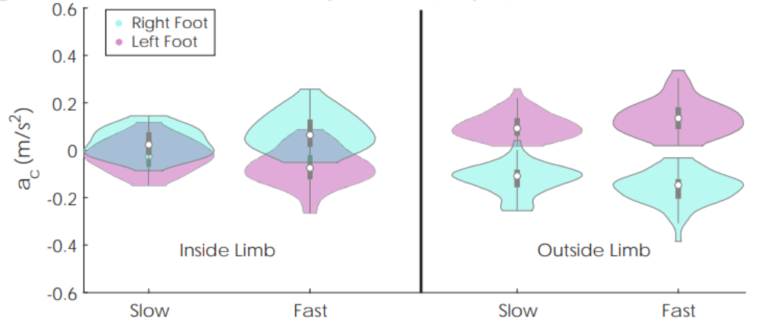
There is growing interest in using inertial sensors to continuously monitor gait during free-living mobility. Inertial sensors can provide many gait measures, but they struggle to capture the spatial stability of the center-of-mass due to limitations estimating sensor-to-sensor distance. While the margin of stability (MoS) is an established outcome describing the instantaneous mechanical stability of gait relating to fall-risk, methods to estimate the MoS from inertial sensors have been lacking. Here, we developed and tested a framework, based on centripetal acceleration, to determine a correlate for the lateral MoS using inertial sensors during walking with or without turning. Using three synchronized sensors located bilaterally on the feet and lumbar spine, the average centripetal acceleration over the subsequent step can be used as a correlate for lateral MoS. Relying only on a single sensor on the lumbar spine yielded similar results if the stance foot can be determined from other means. Additionally, the centripetal acceleration correlate of lateral MoS demonstrates clear differences between walking and turning, inside and outside turning limbs, and speed. While limitations and assumptions need to be considered when implemented in practice, this method presents a novel correlate for the lateral MoS during walking and turning using inertial sensors, although further validation is required for other activities and populations.

